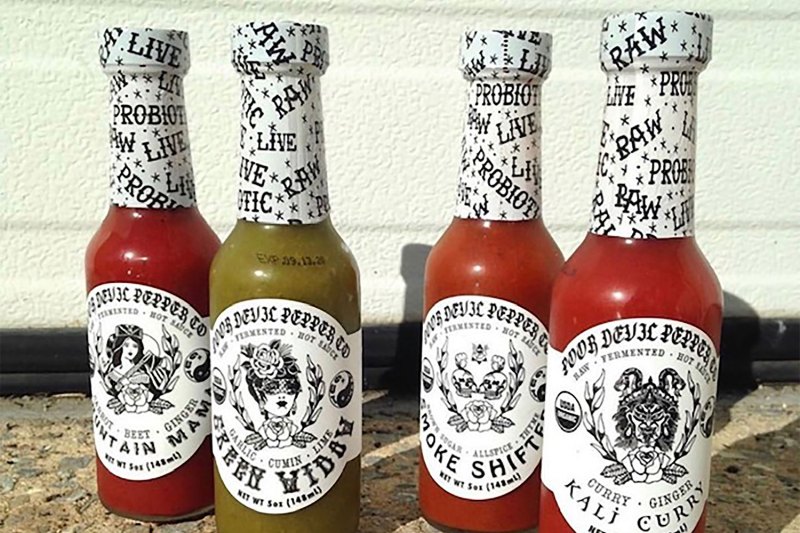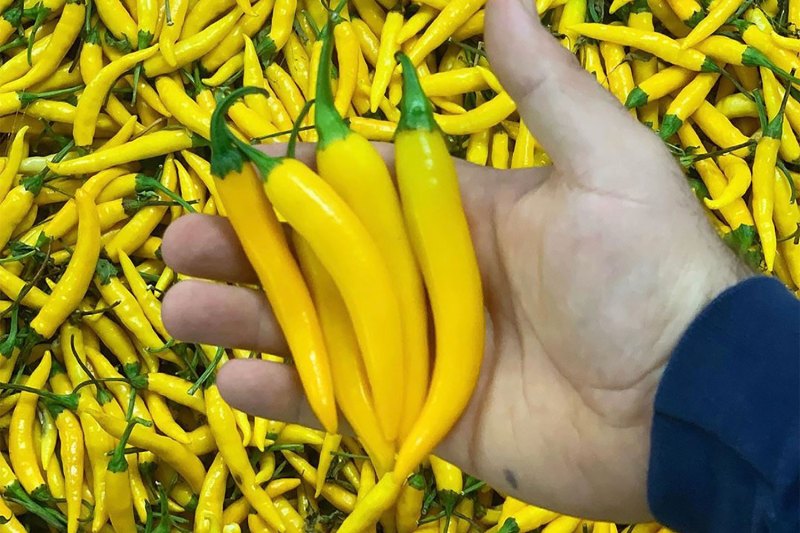Fermentation is one of the oldest methods of food preservation, but now foodies are using this age-old method for more than increasing a food’s shelf stability. In recent years, researchers have discovered that fermented foods also have several health benefits, leading young, health-focused consumers to embrace food trends such as homemade kombucha, sauerkraut, and kimchi; and contemporary chefs have realized the potential of fermented foods and their unique umami-driven flavor characteristics and acidic qualities. One of the most exciting fermented ingredients for spice lovers, though, is hot sauce.
While the standard vinegar-based hot sauce favored by the fearless foodies brings the sting, tears, and even hallucinations — if the peppers are hot enough — lacto-fermented hot sauce brings a new palette of flavors in addition to the adrenaline rush of the heat. For those who want to take things a step further, creating a raw lacto-fermented hot sauce is the most natural method, and results in a hot sauce that contains probiotics.
What is Lacto-Fermentation?
Simply put, lacto-fermentation is a type of fermentation that uses salt, an anaerobic (oxygen-free) environment, and the lactic acid bacteria (LAB) formally known as lactobacillus, found on the skin of fruits and vegetables to break down the sugars in food to form lactic acid and sometimes alcohol or carbon dioxide.

“The salt in the ferment causes an osmosis where it’s pulling the water and juices out of the vegetables,” Jared Schwartz, founder, co-owner, and chief fermenter at Poor Devil Pepper Co. in Hudson, NY, says, “and with these lactic acid bacteria it starts to preserve itself in this liquid.” The salt content — which has to be at least 2% of the weight of the food being fermented — discourages bad bacteria from forming, allowing the LAB to do its job fermenting the food.
The Essential Equipment and Ingredients
“If you’re into fermenting foods, the only real necessities you should buy are some good jars or containers & a pH meter,” says Schwartz. “From there, personally, I’d spend more money on chopping, blending, or slicing equipment. A good kitchen scale never hurts.” Once you have your equipment sorted out, you’ll need to source your ingredients.
If peppers are in season where you live, we always recommend sourcing those locally, and organic is better for fermentation. Depending on your spice tolerance there is a large range of peppers to choose from, so it really comes down to personal preference. “I don’t know that there is a wrong pepper to work with,” Schwartz says, “although some have their own natural problems.” For example, meatier peppers with thick skins — like the jalapeño — will take longer to ferment, as opposed to habañeros which are more delicate. Ghost, Thai, Aleppo, and Cayenne are a few other hot peppers with great flavor worth considering if you can source them in your area.

If you like the flavor of one pepper, but have difficulty with the heat level (measured on the Scoville scale), then blend the hot pepper with a sweeter one to cut the spice. Other vegetables such as carrots, celery, garlic, onions, and so on, are also worth considering for your blend to add complexity in flavor — as they do at Poor Devil Pepper Co.
Lastly, you’ll want to have some good sugar on-hand in case you want to balance the spice a bit, and a natural sea salt, or any salt that isn’t iodized. Once you’ve sourced these few ingredients, and have your kitchen stocked, all you have to do is put it all together and let nature do its thing.
How to Make Raw Fermented Hot Sauce
Raw fermented hot sauce is different from a regular fermented hot sauce because it doesn’t include any additives, meaning it needs to be refrigerated whether or not it’s opened. This is similar to how probiotics have to be refrigerated.
“What we make at Poor Devil Pepper Co. are raw fermented sauces that really tap into that umami flavor through the natural fermentation without using any additives or vinegar,” Schwartz says. “Even though it is not traditional to have a hot sauce that stays refrigerated even before opening we think the flavor and probiotic benefits are worth it.” Vinegar is added in many versions of fermented hot sauces for shelf stability, but it isn’t necessary if you want the full effect of the natural fermentation.

“You’ll learn pretty quickly that fermented hot sauces, especially raw ones, give off a lot of heat whereas with pasteurized, vinegar-based hot sauces you lose a lot of that heat,” Schwartz points out. So, it is important to keep in mind that you will be getting the essence of the pepper’s heat with your end product — a scary thought depending on which peppers you choose.
If you are someone who likes to put their own spin on recipes, it’s important that you follow one rule and that’s making sure that 2% salt is added to the overall weight of your ingredients. “The more sugar in an item you’re fermenting you’ll want to increase the salt ratio,” Schwartz says, “unless you’re trying to make booze.” Once you’ve done that, you have created a bacteria-free environment and are ready to create your own healthy, raw fermented hot sauce.
Poor Devil Pepper Co.’s Raw Fermented Hot Sauce at Home
Ingredients:
- 5-8 jalapeños
- 1 yellow bell pepper
- 1 full bulb of garlic (all cloves peeled)
- .5 white onion
- 1 tablespoon + one pinch of sea salt
- 32-oz Ball Jar (or other tight sealing jar)
Method:
- Snap the stems off the jalapeños, remove the stem and innards from the bell pepper, and peel all the garlic cloves and onion.
- Place everything in a food processor and blend until it’s chunky, then let the mix sit (without blending) in the food processor for about 5 minutes until you see more liquid forming.
- Pour all ingredients into a 32-oz jar, and make sure to only leave about 1/2 inch to 1 inch of head room (space between the ferment and the lid). Seal tight, and let it ferment!
- After 2-3 weeks of fermentation, open it up to properly check. If you have a pH meter check it. We’re looking for (legally) below 4.4 – (this is because no “bad bacteria” have been proven to live past this pH level).
- If you don’t have a pH meter, use your best judgment. Once you have reached desired fermentation (flavor and aroma), put the sauce back in the food processor and blend until preferred consistency is reached. Store in the refrigerator and enjoy it on all of your meals!
Other things to note:
- Routinely check your jar to make sure too much CO2 has not built up. If the lid is bulging, slightly open to jar to release some CO2 and quickly close the jar.
- If you see white specks starting to form on top, don’t panic, it’s not mold; it’s a strain of yeast called “Kahm yeast.” The yeast is not harmful, but it also doesn’t taste great either. Scrape it off and let it continue to ferment.



